Oklahoma's Governor's Mansion puts state's heritage on display. Take a look through its history
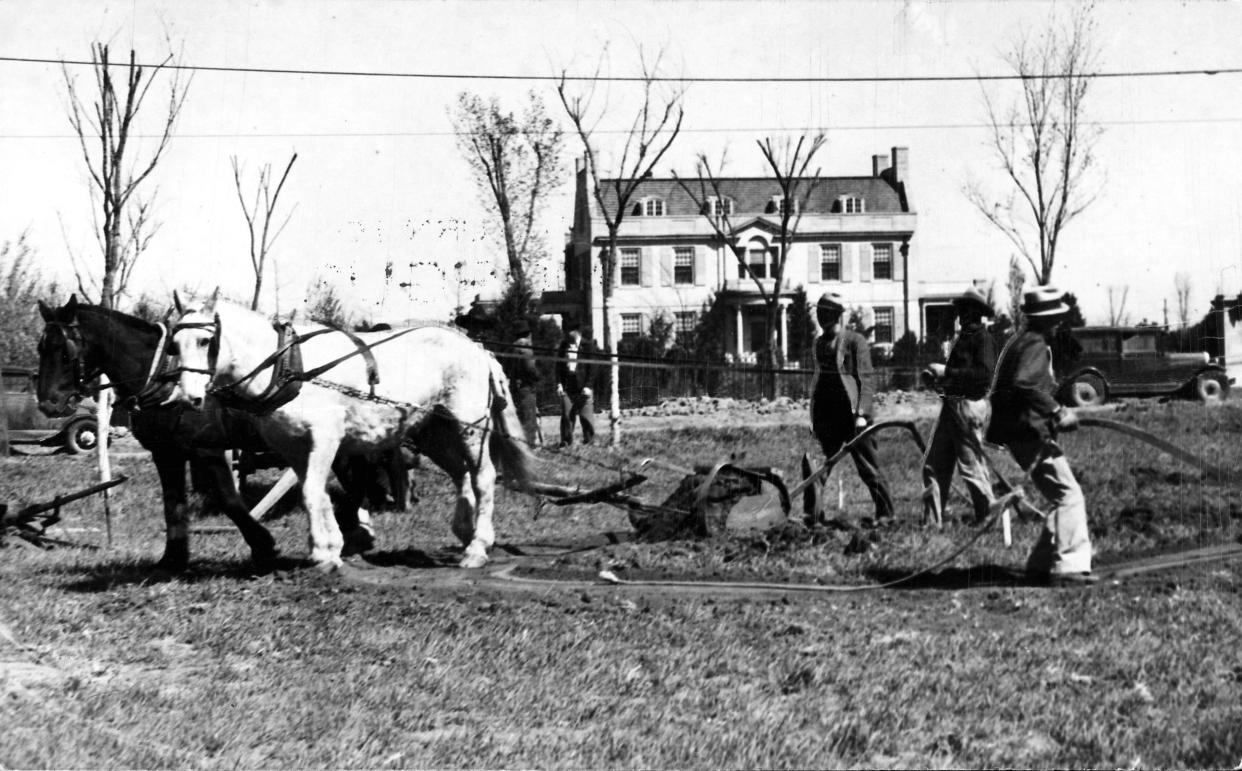
- Oops!Something went wrong.Please try again later.
- Oops!Something went wrong.Please try again later.
- Oops!Something went wrong.Please try again later.
- Oops!Something went wrong.Please try again later.
- Oops!Something went wrong.Please try again later.
- Oops!Something went wrong.Please try again later.
The Oklahoma Governor’s Mansion turns 95 this year, which will make it as old as former Gov. George Nigh, who lived there for eight years, beginning in 1979. It was during Nigh’s time that private donors paid to put in an Oklahoma-shaped swimming pool.
The pool has a hot tub, situated in the Panhandle, “because it’s always hot in the Panhandle,” mansion historian Liz Wood dead-panned on a recent tour.
Only one other governor’s mansion has a state-shaped pool, added Wood, who disclosed, without reference to football or even the Southeastern Conference, that it’s in Alabama.
The 14 acres of grounds surrounding Oklahoma’s mansion are mostly uncluttered. There’s an outdoor kitchen in the pool area, with a fireplace, a big grill and a television in a wall mount that, according to the manufacturer, can withstand winds of 70 mph.
From Clara Luper to Black cowboys, OKC sculptor LaQuincey Reed casts history in bronze
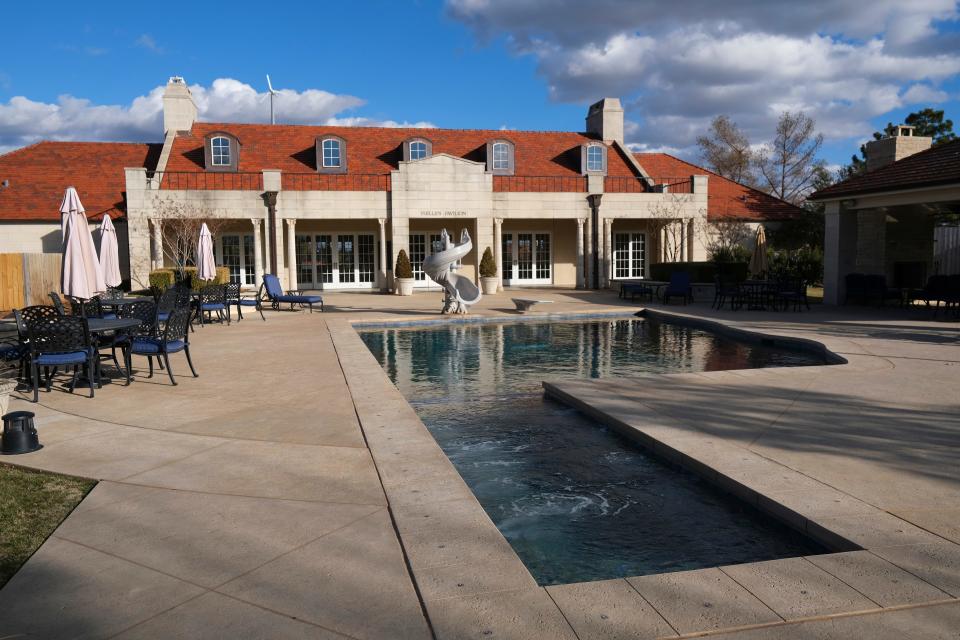
The wide lawn offers plenty of room to chuck a ball around or play cornhole. There is a memorial to the children of governors, donated by former Gov. David Walters and then first lady Rhonda Walters. Along a narrow garden path, there is a plot where some former first pets are buried. There is a tennis court that appears to have been omitted from all maintenance priority lists for the last few decades.
Early in the mansion's history, there were times when the grounds reflected the state's agriculture and energy economies. When William “Alfalfa Bill” Murray — whose many controversial traits included racism and antisemitism — lived at the mansion, he grew vegetables on the grounds to give to some of his poor neighbors. A photo in The Oklahoman’s archives shows horses pulling a plow in the front yard.
The next governor, E.W. Marland, an oilman who lost his company to J.P. Morgan and married his adopted daughter, approved oil exploration on the grounds, and drilling rigs poked holes all around the neighborhood. An Oklahoman photo from the time shows stands of pipe laid out just south of the Capitol, possibly to provide a direct line of crude revenue into state coffers.
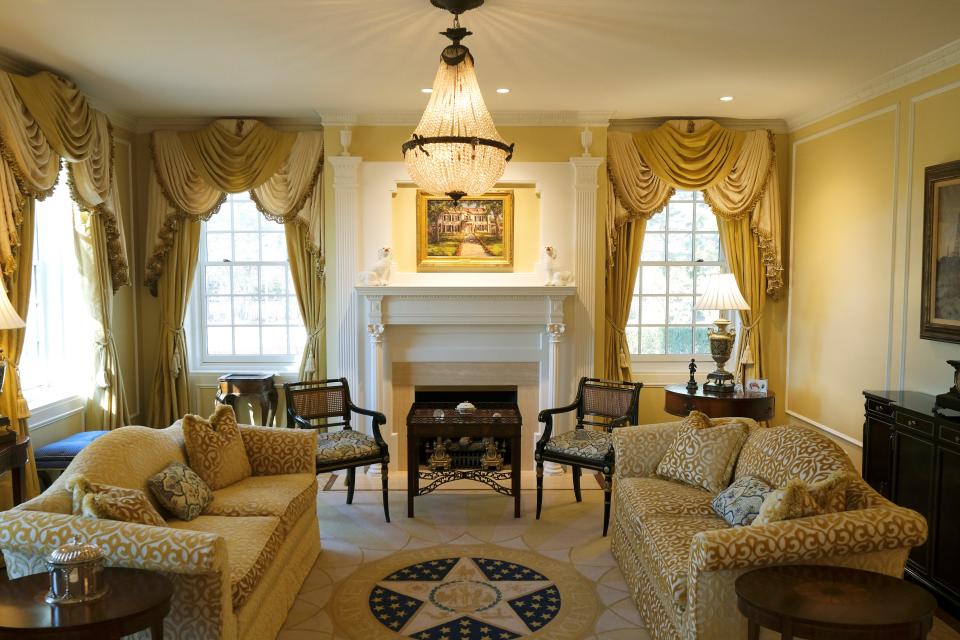
Marland also planted magnolia trees and employed Japanese gardeners to tend to the grounds, according to Wood. The most famous tree on the property now is an offspring of the Survivor Tree, an American Elm that withstood the blast and still stands on the site of the 1995 Oklahoma City bombing. Former Gov. Brad Henry and then-first lady Kim Henry planted the offspring in 2007.
Wood has worked at the mansion continuously in some capacity since the Henry administration; she also did a stint during Frank Keating’s first term. When she managed the mansion, she handled requests for tours and visits, including one from a man who wanted to land a helicopter on the mansion grounds and propose to his girlfriend. Wood declined that request.
People ask her all the time about the governors, what they’re like.
“At the end of the day — Republican or Democrat — they love Oklahoma and they love their families,” she said.
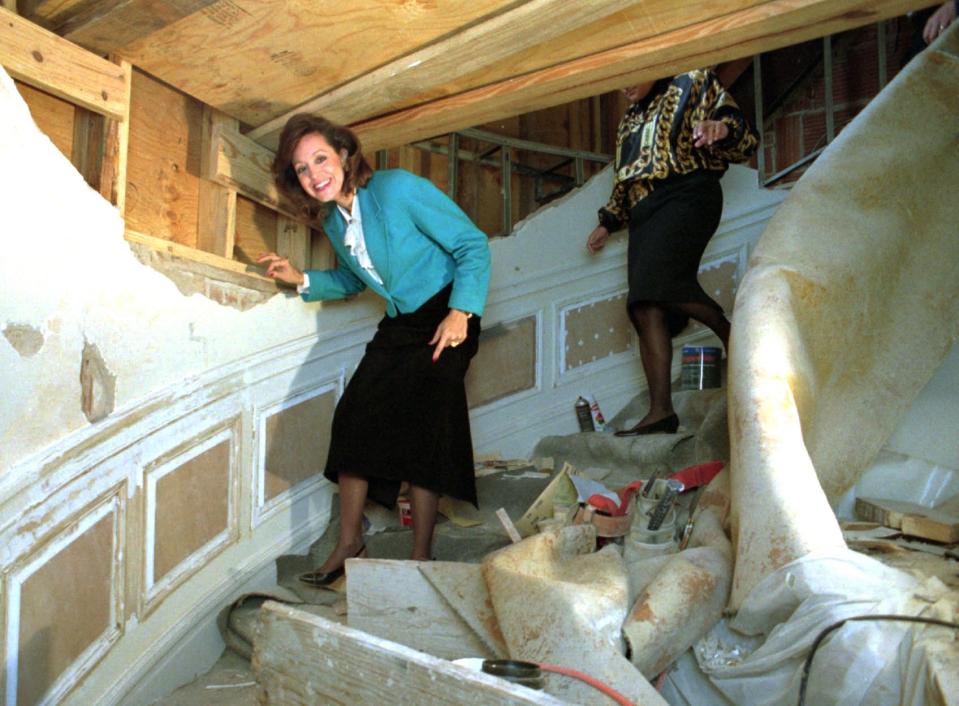
Wood is among those fascinated by the story of Lydie Marland, the adopted daughter and, then, second wife of E.W. Marland and first lady of the state. Her life took many unusual turns after she was widowed and broke at 41. There is a simple chair by the fireplace in the mansion library, Wood said, that looks just like one in which Lydie Marland is seated in a picture in a mansion history book.
“I mean … I have goosebumps,” Wood said.
Oklahoma's storied military history:Learn more at museums across the state
Bring your own furniture
Before moving into the mansion in Oklahoma City, Marland had built one three times as big in Ponca City; called the Palace on the Prairie, it was completed in 1928, at a cost of $5.5 million. Oil fortunes come and go, though, as Oklahomans know, and Marland wound up living in the artist studio on the grounds.
The Governor’s Mansion was completed in 1928 at a cost of $75,000. The governors had to bring their own furniture and pay for their own food. The first to live there was the state's seventh governor, Henry S. Johnston, who was the second to be impeached and removed from office.
Stately and not showy, the mansion was built just east of the Capitol in the Dutch colonial style, with a limestone exterior. It features dormers jutting from the pitched roof, second-floor balconies and a large sunroom.
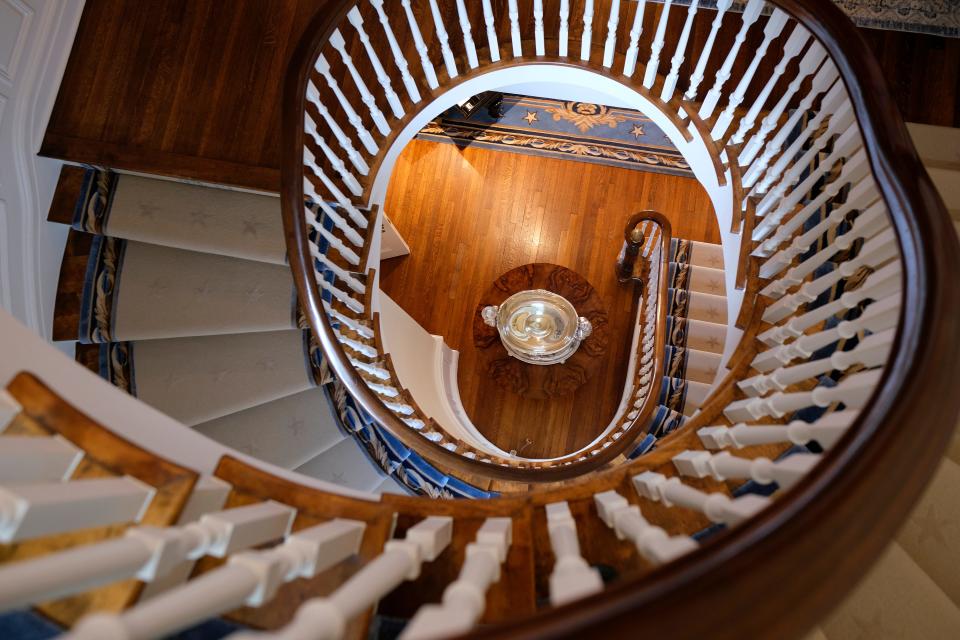
Of the 14,000 square feet, spread out over four floors, only the first floor and the grounds are currently open to tours. The basement has a “media room” that is currently being renovated. Can’t see that. The second floor has the four bedrooms. Off limits. The top floor is a ballroom. It’s closed.
Even so, privacy might be hard to come by. Mansion staff — there are three full-time staff members, in addition to Wood — come and go, and the governor holds meetings morning, noon and night. There are functions, there are tours. The pavilion by the pool, which can seat up to 175 people, is leased for some private events, mostly on weekdays, though not for weddings.
After his first overnight at the mansion, in early 2019, Gov. Kevin Stitt said he walked down the stairs "and the staff was down there cooking breakfast and I had my long johns on and I asked, 'Am I allowed to have my long johns on?’ They said, 'We've seen every governor in their underwear, sir. You're fine.'”
There are, no doubt, assorted views about seeing others and being seen in underwear.
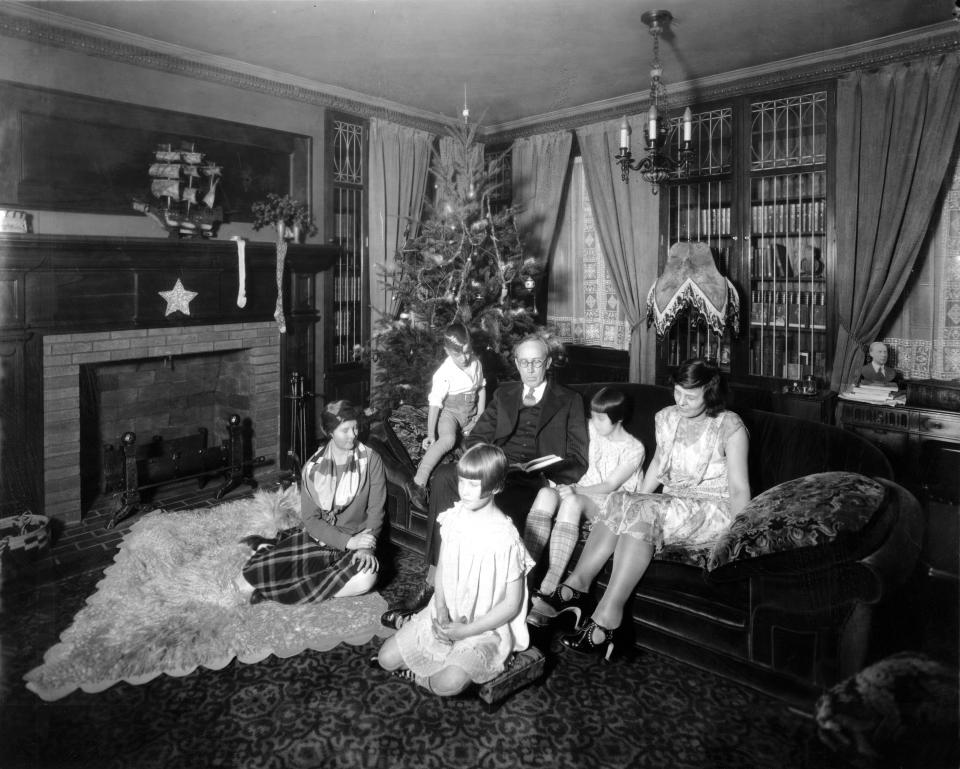
The Stitt family, which includes six children, no longer lives in the mansion, though they still spend time there, for business and leisure.
The governor and first lady Sarah Stitt have been helping raise money for the private foundation — Friends of the Mansion — to build a separate residence on the grounds, perhaps in time for the next governor, who would take office in 2027.
Oklahoma landmark:Lazy E Arena in Guthrie nears 4 decades as bastion of rodeo tradition
The first lady, who has an office in the mansion, oversaw several recent improvements, including the latest kitchen redo, the installation of new lighting and a geothermal heating system. A stunning new area rug, featuring the Osage shield in blue with brown feathers, adorns the foyer. The Great Seal of Oklahoma centers the new kitchen floor.
The kitchen and the sunroom are the homiest — the only first-floor rooms that are remotely inviting for hanging out in long johns.
Foundation created
Former first lady Cathy Keating, who lived in the mansion — and, for a time during renovations, its carriage house — from 1995 to 2003, created Friends of the Mansion, which has restored the building and grounds and served as bulwark to the Legislature’s parsimony.
Wood, the mansion historian, has seen pictures of kitchen pots lined up to catch water dripping from the leaking roof. The heat went out on Christmas Eve for one recent governor’s family. Neglect and shoddy workmanship led to myriad problems.
The Legislature wasn't just cheap about the mansion. Lawmakers through the decades also allowed the Capitol to crumble around them, and never appropriated the money to finish the building with a dome. The Keatings raised the money for the dome, giving them and future first families a view from the mansion of a Capitol as it was designed.
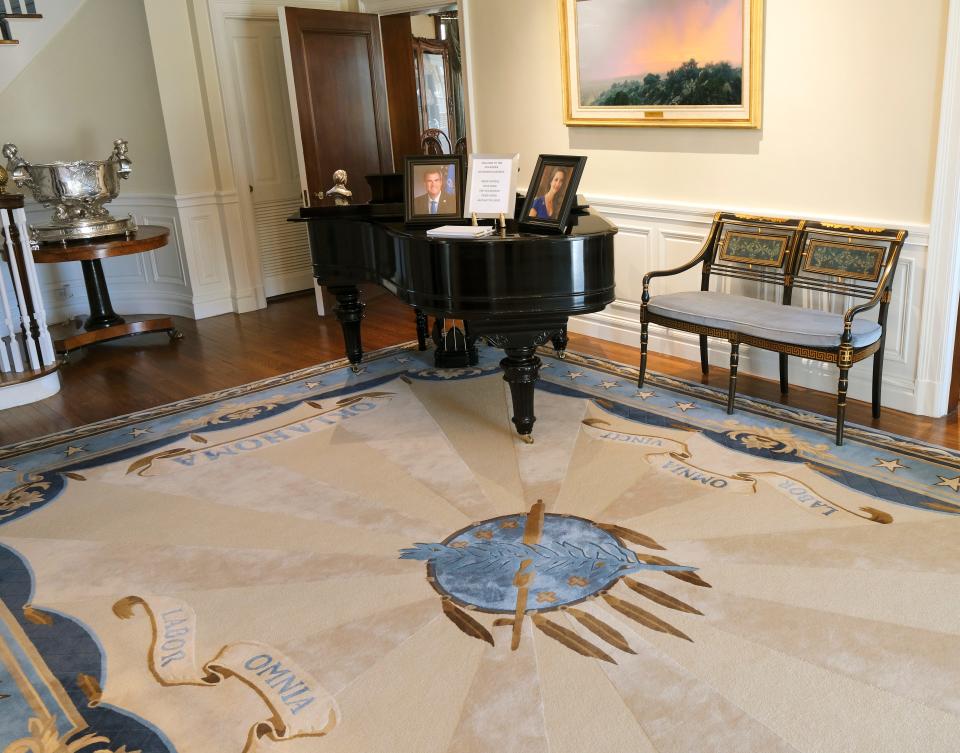
And if lawmakers were practicing some type of faux populism in letting the state's heritage decay, the people of the state took a different view of the mansion.
In 1959, after the Legislature refused to fund a renovation of the mansion, hundreds of volunteers pitched in to "clean, paint and update the aging residence for newly elected Governor J. Howard Edmondson and his family,” according to Friends of the Mansion.
More:'Immersive' Stanley Rother shrine museum highlights priest's life, ministry
And when Mrs. Keating began fundraising for a major mansion overhaul, she reached out all over the state for gifts and held a housewarming that drew 2,000 people. Donors with deep pockets may have provided most of the money, but ordinary Oklahomans stood in line for hours to provide mementos. A group from Chickasha donated the chandelier that now hangs in the parlor. Gov. Keating was most impressed by the notes and letters brought by Oklahomans.
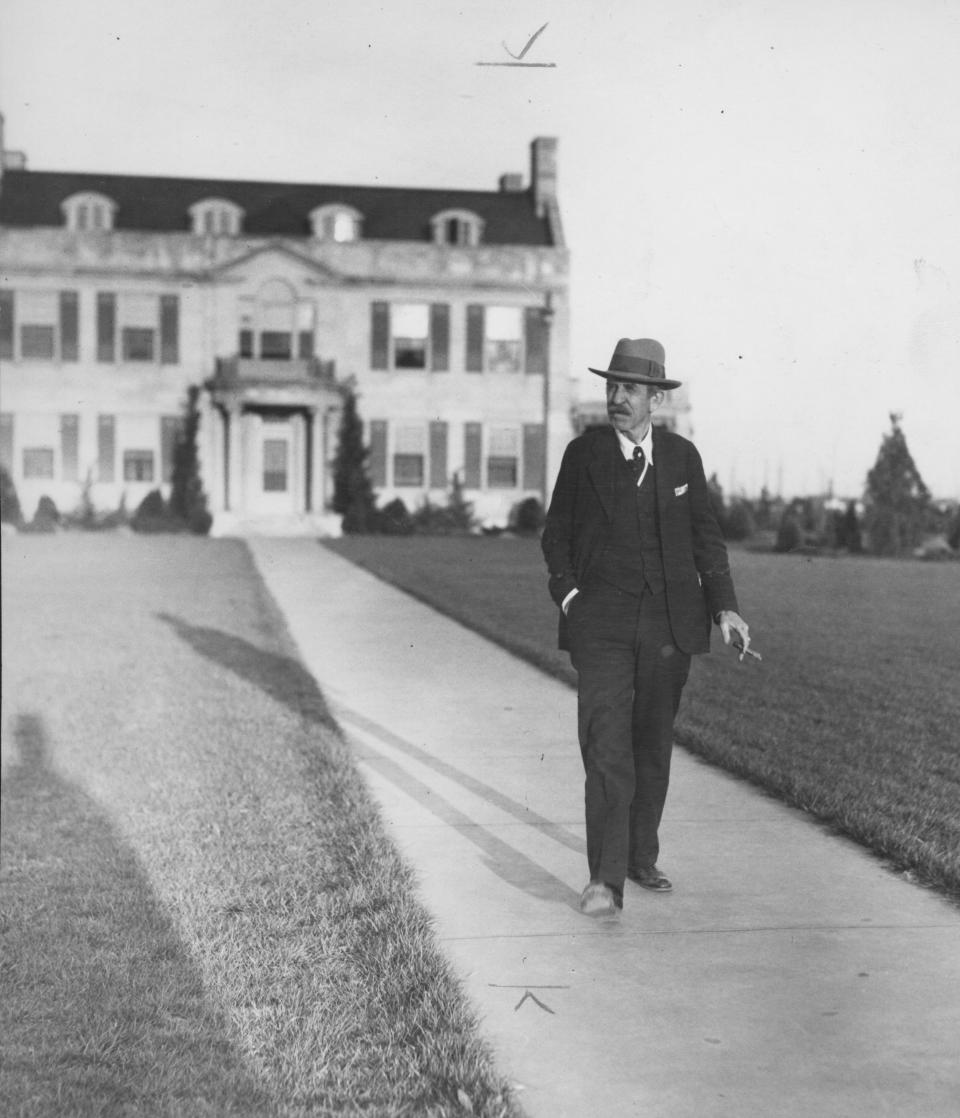
"It's a statement that people want to feel a part of this home," he said after the housewarming event.
Now, governors don’t have to bring their own furniture. It’s all donated. They don’t even need to bring their own picture frames, Wood said, just a toothbrush. Given the size of closets constructed in 1928, they likely don’t bring much of a wardrobe either.
The library bookcases — which former first lady Shirley Bellmon redid with leaded glass she made herself ― are stuffed with mementos from the 95 years of residents. There is a Bible that belonged to Robert S. Kerr, the oil company founder who served as governor before becoming a powerful U.S. senator. Mary Fallin, the first woman governor, donated the shoes in which she was inaugurated for a second term, so people can at least imagine what it was like to walk in them.
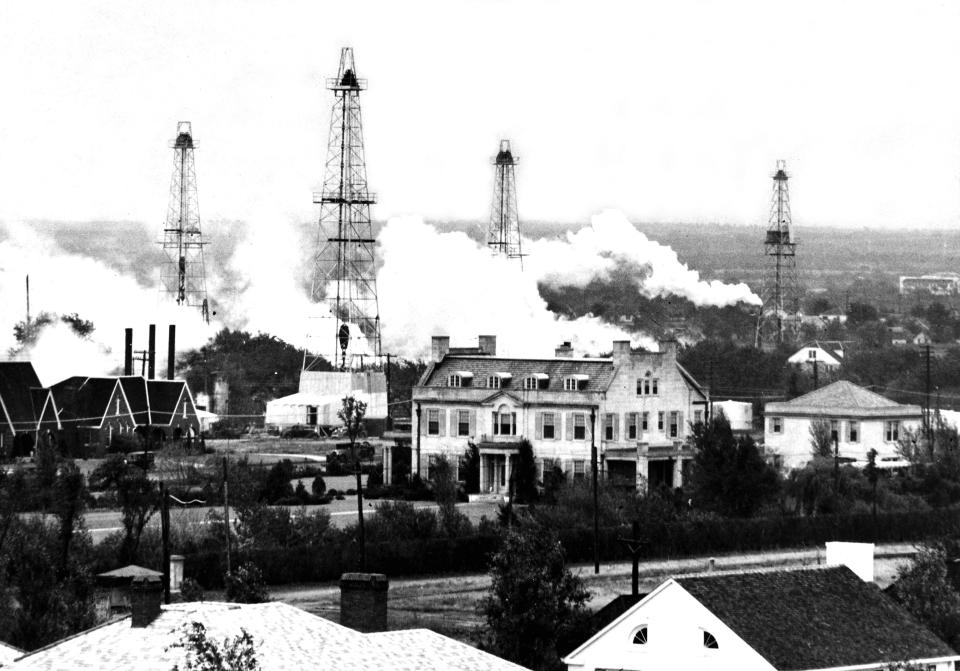
The law license granted to Alfalfa Bill Murray to practice in Indian Territory court before Oklahoma statehood is there.
When the Keatings moved into the mansion, a staff member told the governor that the house was haunted by Alfalfa Bill. The spirit haunted the third step of the spiral staircase that features names of all the governors and their years of service. Mrs. Keating slipped on it, and “during the next few years we lived there, several other people slipped on that same step,” the former governor said a few years after leaving office.
Mrs. Keating commissioned a doll in Alfalfa Bill’s likeness that sat on the step for years and seemed to pacify the spirit.
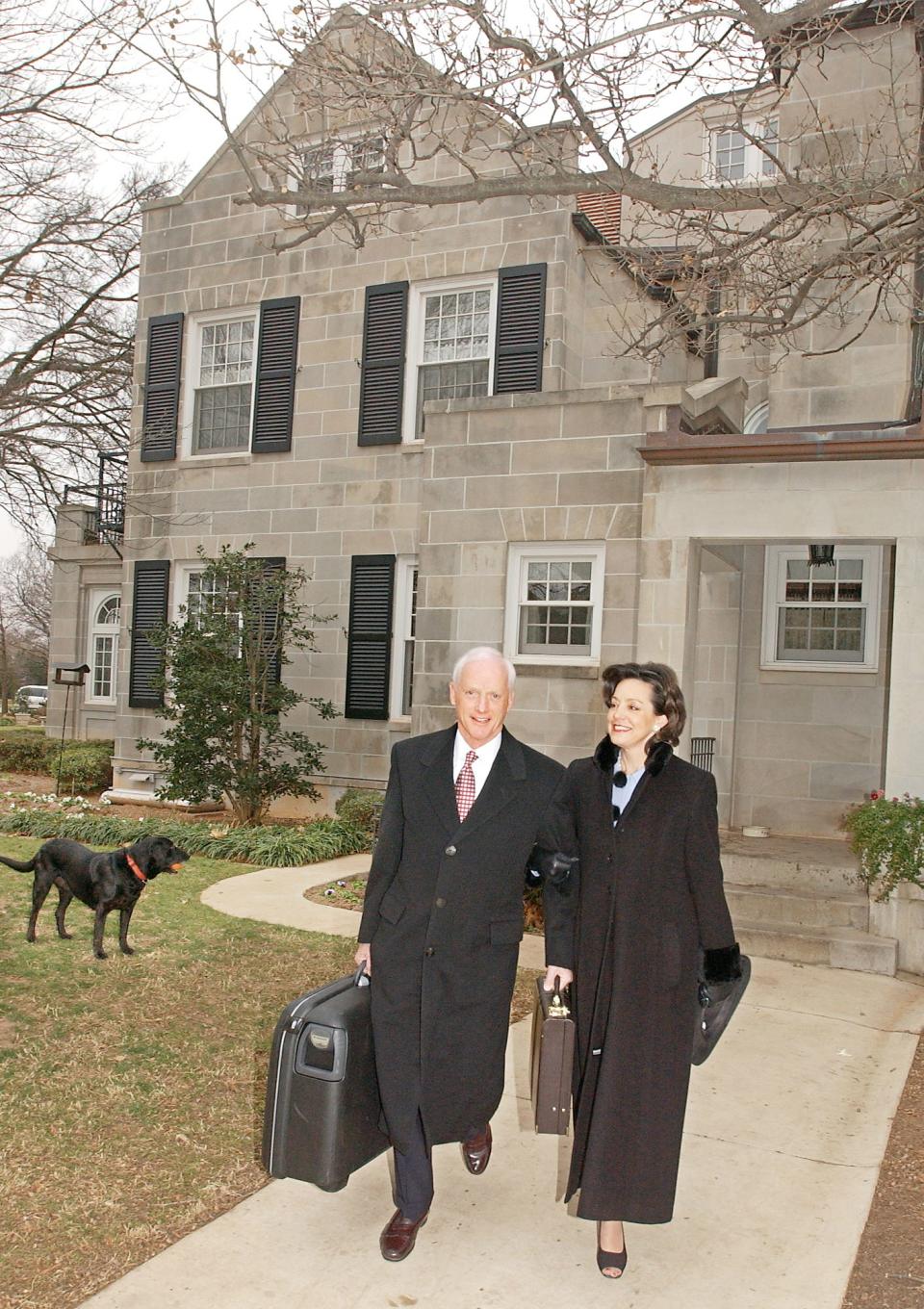
This article originally appeared on Oklahoman: Many Oklahomans invested in restoring Oklahoma Governor's Mansion

